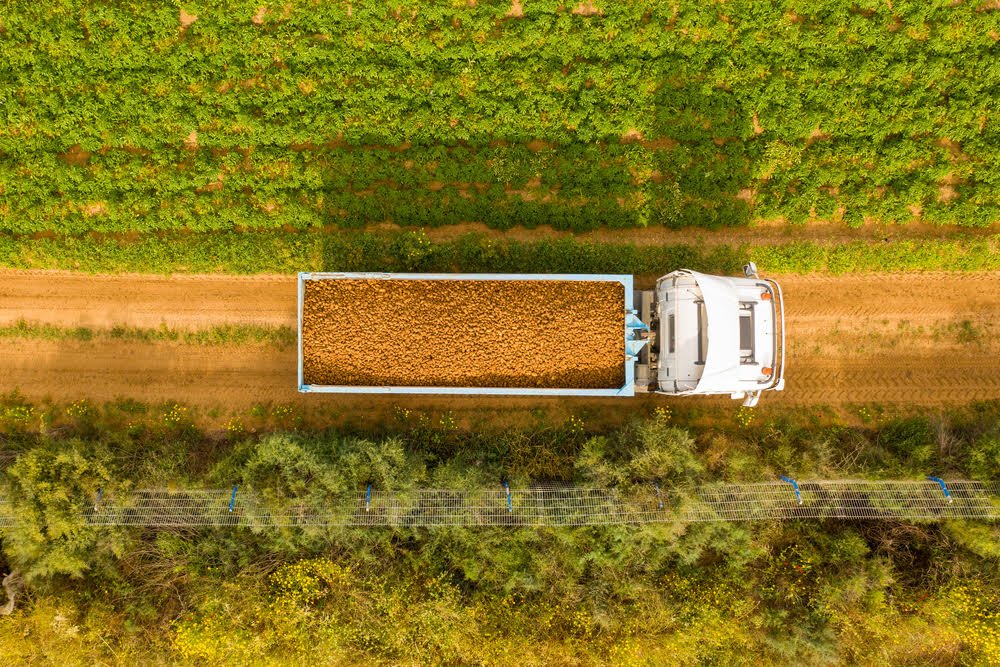
Financing the modern-day farm
For millennia, farmers have been remarkably resourceful and resilient in overcoming ecological perils that threaten their livelihood.
Now, they face environmental challenges far greater than flood, drought and pestilence. In addition, they contend with volatile market conditions that were inconceivable to their ancestors.
But as new agricultural trends and technologies emerge and evolve, so do new funding solutions. Now is the ideal time for agribusiness to innovate and create sustainable growth.
The first questions on many farmers’ minds are: Where do I start, and how do I pay for it?
Leveraging innovative technologies offers numerous ways to reinvent, expand and grow an agribusiness. However, finding and acquiring the most worthwhile solution for your organization is neither easy nor cheap.
For farmers accustomed to using a first deed of trust to fund agricultural investments, flexibility and cost savings may sound ridiculous. The good news: as farming techniques and related technologies evolve, so have options available to fund them.
Innovation
Data, drones, connected sensors and renewable energy resources are all emerging technologies that make sustainable and profitable farming viable. According to research from consulting firm McKinsey & Company, successful implementation of connectivity in agriculture has the potential to add $500 billion in additional value to the global gross domestic product by 2030. That equates to a nearly 10% increase from the industry’s expected total by the end of this decade.
From production and processing to farm management and analytics, here are some key technology players that help farmers transition to more sustainable agribusiness models:
- Robotics. Used for processing, fertilizing, pruning and picking.
- Drones. Used for monitoring yield, managing water distribution, detecting pests/diseases.
- Sensors. Used for analyzing machine efficiency and yield.
- Artificial Intelligence (AI). Helps to increase yields, improve efficiencies, increase sustainability and resilience across crop cultivation and animal husbandry.
- Mobility devices and apps. Used to strengthen digital transformation, improve communications and farm management.
- Renewable systems. Help to increase energy savings, minimize resource consumption and optimize furloughed land.
Creative capital alternative
Equipment financing makes innovation both possible and practical, allowing farmers to acquire the technology and equipment needed to realize a more sustainable business model.
Consider these types of financing to help acquire the technology needed for today’s successful farming:
Enhanced cash flow. With the constant churn of newer and better ways to cultivate, harvest, manage and distribute products comes a common dilemma: How to fund ideas and equipment. With financing, farmers can acquire and implement the assets they need now, and the assets can generate revenue as they are paid for over time.
Credit conservation. Since the 2020 pandemic, organizations realized what farmers have known for decades: liquidity and adaptability are essential to business survival. Equipment financing helps to preserve working capital while remaining nimble, with low or no up-front cash requirements. Financing also comes with the option of monthly, quarterly, semi-annual or annual payment plans.
Flexibility. The ability to respond to environmental, market and policy changes — quickly and effectively — is an ever-pressing challenge for farmers. Financing lets farmers tailor payment terms that align with their budget and seasonal cash flows. It also enables borrowers to keep pace with technological advances; midterm upgrades and end-of-term options can keep farmers from ever owning obsolete equipment.
100% financing. Replacing outdated farm equipment is a critical need for most farmers today. But to truly innovate, new machinery is just one piece of the puzzle — and a considerable investment in itself. A customized financing structure allows borrowers to bundle equipment, software and soft costs such as freight, sales tax, labor, professional fees and other related costs into one payment plan.
Sustainability. Today’s farmer often integrates artificial intelligence, robots and drones into daily farm activities. These digital assistants not only help mitigate labor shortages, but they can also be on the job 24/7 to improve yields, manage water, control pests and perform other duties that promote a sustainable and successful farming enterprise.
Scalability. With the flexible freedom of financing, agritech initiatives offer boundless opportunities to scale. Each of the technologies mentioned in this article can reduce costs, increase yields and/or improve efficiencies. They can also be “mixed and matched” to form interdependent systems, further enhancing farmers’ potential to enhance yields, profits and operational efficiencies.
Choosing a lending team
Financing can be much more than an immediate, flexible funding alternative. The right financial provider can help farmers empower assets and fine-tune (or even develop) innovation strategies. Here are some qualifications to look for when choosing a financing provider:
- Knowledge of farming and agriculture assets
- A proven track record in lease structuring
- A clear understanding of your business
- A trusted, reliable source of capital
- A creative approach to big-picture opportunities
— Justin Woodward is vice president of equipment finance for Key Equipment Finance. Based in Boise, Idaho, he has 22 years of equipment finance experience. He can be reached at [email protected].
Top photo: Truck loaded with fresh picked potatoes crossing a field.














